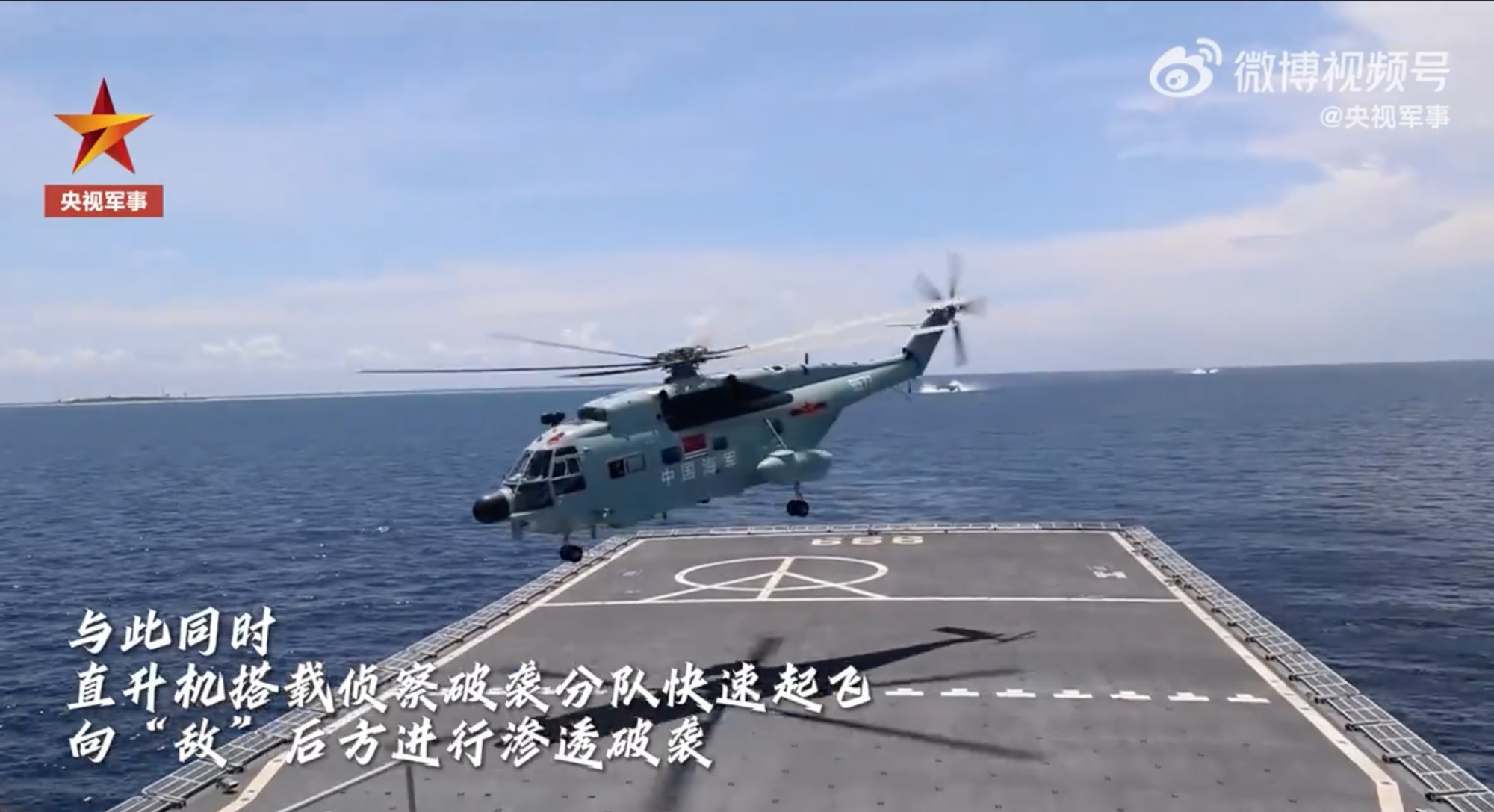The Chinese military is enhancing its amphibious combat skills and command efficiency, a recent landing exercise aired by state broadcaster CCTV indicates.
The People’s Liberation Army (PLA) Marine Corps exercise showcased the capabilities of a combined arms battalion, as troops tried out multiple types of weapons, equipment and combat models, according to the report on Thursday.
PLA Navy Marine Corps are expected to be a key force if Beijing decides to seize self-governed Taiwan, which it sees as breakaway territory to be reunited by force if necessary. Tensions have been on the rise since US House Speaker Nancy Pelosi visited Taipei in August, defying Beijing’s repeated warnings against such a trip.
Do you have questions about the biggest topics and trends from around the world? Get the answers with SCMP Knowledge, our new platform of curated content with explainers, FAQs, analyses and infographics brought to you by our award-winning team.
The land, sea and air drills by an unidentified brigade of the PLA Navy Marine Corps combined multiple tasks, including obstacle removal, reconnaissance and firing while functioning as a single battalion, CCTV said.
China’s Type 075 amphibious assault ships ready for combat: PLA Navy
According to the report, dozens of amphibious armoured vehicles and assault boats carrying marines headed towards the target area, while helicopters carrying the reconnaissance and attack unit took off to conduct infiltration and attack manoeuvres to the enemy’s rear.
The amphibious armoured vehicle then fired smoke bombs to cover the troops for obstacle removal tasks, before marines made a surprise landing and broke through the enemy’s beach defences, the report said.

“In such a joint landing exercise, the operations of sweeping out obstacles, reconnaissance force penetration and attack, combined with assault force maritime firepower strike operations, previously required a high degree of cooperation among multiple battalions of the brigade,” Wu Dan, commander of the brigade’s combined arms battalion was quoted as saying by CCTV.
“Now, we only need one combined arms battalion to do it independently.”
The command and support capabilities are more efficient under such a “combined arms battalion system”, where an assault involves several types of weapons, equipment and combat forms, the report said.
“The Marine Corps are at a critical stage of accelerating transformation and development,” said Li Wei, deputy chief of staff of the brigade, as he called for a speedy boost to combined capabilities as well as quick response capacity, according to CCTV.
The corps have undergone significant expansion since 2017, growing from two brigades to eight, according to a report published on the US Naval War College website in October last year.
The report, in examining the likely role of the PLA Navy Marine Corps in a cross-strait amphibious campaign, pointed out challenges to combat capacity upgrades, including ensuring battalion commanders are “trained and experienced to handle the increased burden of coordinating different arms”.
Some battalion staff taking part in earlier landing exercises reportedly did not make use of the reconnaissance elements under their command and lacked understanding of the obstacle removal procedures of engineering detachments, causing delays for follow-on units, the article said.
Is the US Navy’s ageing fleet opening the window for a PLA attack on Taiwan?
Li Jie, a Beijing-based military specialist, said the emphasis on combining different tasks under one battalion, as seen in the exercise broadcast by CCTV, proves the Marine Corps are adapting to the needs of modern warfare and increasing command efficiency.
In the past, a particular PLA Navy Marine Corps brigade might have different battalions under its command, such as the amphibious mechanised infantry, reconnaissance and firepower battalions, each of which had to carry out different tasks, Li said.
“But now, [the military] combines all of these in one battalion ... which is a flatter command method that conforms to the characteristics of modern warfare,” Li explained.
“The battalion then becomes the most direct combat unit and can fulfil combat tasks independently, issue orders more directly and increase combat efficiency.”
More from South China Morning Post:
- Chinese top brass say PLA must be on ‘full-time standby’ for war in Taiwan Strait
- B-21 bomber will cut US response time against China but can’t hide from PLA: military experts
- Taiwan braces for tougher mainland China forces, defence minister says after Central Military Commission overhaul
- Chip industry grapples with risk of China blockade or attack after Pelosi visit but few options exist
For the latest news from the South China Morning Post download our mobile app. Copyright 2022.





